What better way to kick off a new decade than by planning a trip? If you’re hoping to fill the next ten years by seeing new sights, learning about other cultures, taking in history or relaxing on an endless white-sand beach, Smithsonian magazine has curated a list of destinations worth considering for 2020. Some will host once-in-a-lifetime athletic competitions (Tokyo and the Summer Olympics), others boast world-class art exhibitions (Rome and New York City) and still others allow visitors to experience wonders of the natural world (El Morro, New Mexico, or Ilha Grande and Paraty, Brazil). Read on, and happy traveling.
Japan
/https://tf-cmsv2-smithsonianmag-media.s3.amazonaws.com/filer/94/69/94690ca4-a099-4a62-bf67-091d1b52d092/new_national_stadium_tokyo_1.jpg)
In 1964, Tokyo became the first city in Asia to host the Olympics, and this summer, the Japanese capital will serve as the summer Games’ venue once again. With the 2020 Olympics (July 24-August 9, followed by the Paralympics August 25-September 6) comes a brand-new, $1.43-billion main stadium built with timber from each of Japan’s 47 prefectures as well as five new sporting events: skateboarding, baseball and softball, surfing, sports climbing (think lightning-quick, spider-like wall-scaling—here’s a video) and karate.
Even without a coveted Olympics ticket—the Wall Street Journal recently forecasted that a Tokyo seat “looks like the toughest Olympic ticket ever”—Japan’s biggest metropolis has plenty to offer tourists: the bustle of Harajuku shopping district, the crowded-but-orderly Shibuya Crossing, conveyer-belt sushi restaurants, the traditional izakayas that line “Piss Alley,” a fashion exhibit at the National Art Center, views from 2,000 feet up in the Tokyo Skytree and the animated film company Studio Ghibli’s headquarters. 2020 also marks the centennial of Meiji Jingu, a mid-city oasis (volunteers planted 100,000 donated trees that have grown towering in the intervening century) and active Shinto shrine dedicated to a former imperial couple. Meiji-Tenno-Sai, the memorial day of Emperor Meiji, falls on July 30, during the Olympics; the 19th- and 20th-century monarch will be commemorated in a Shinto ceremony, and the affiliated Treasure Museum will waive its usual entry fee. In November, the three-day autumn festival at Meiji Jingu takes place. Expect to see traditional Noh theater, sumo, horseback archery and more.
Tokyo’s first time hosting the Olympics was intended to be 1940, but World War II disrupted those plans, and it’s that global conflict that led to another anniversary this year: 75 years have passed since the U.S. dropped atomic bombs on Hiroshima and Nagasaki. The first (and only) use of nuclear weapons in war, the attacks killed an estimated 275,000 people. This devastating event for Japan is commemorated at the Hiroshima Peace Memorial Museum, where a permanent exhibit lays out the belongings of many who died in the strike. The memorial itself—known as the Genbaku Dome—has been preserved exactly as the one-time exhibition hall looked in the immediate aftermath of the bombing. In the port city of Nagasaki, feel the weight of this history at the Atomic Bomb Museum and nearby memorial, the Peace Park and the Atomic Bomb Hypocenter Park, where a lone column pinpoints the spot above which the bomb burst. Both cities are accessible by a combination of shinkansen—bullet trains that debuted for the 1964 Olympics—and express trains.
Maine
/https://tf-cmsv2-smithsonianmag-media.s3.amazonaws.com/filer/1e/9c/1e9cc330-4608-4e19-97d4-5bfdaabfeff6/45808677804_2a9b44f3de_6k.jpg)
On March 15, 1820, Maine separated from the Commonwealth of Massachusetts and became the nation’s 23rd state. As a part of the Missouri Compromise, Maine joined the union as a free state, while Missouri entered it as a slave state, maintaining the balance between free and slave states in the nation. Now, Maine’s hosting a year-long birthday bash, commemorating 200 years of statehood.
Leading the state’s official commemoration is the Maine Bicentennial Commission, a group of politicians, curators, historians, educators and others organizing a series of events and offering grants to communities throughout the state looking to stage parades, lectures and exhibitions. Among the grant winners is Rockland’s Center for Maine Contemporary Art, which is presenting an exhibition this summer of photographer S.B. Walker’s visual record of contemporary life in Maine. On Statehood Day, March 15, the public is invited to musical performances and speeches—and to enjoy a slice of cake—in the Augusta Armory. The commission will also hold a Bicentennial Parade in Auburn-Lewiston on May 16, that promises to be chock full of state pride. Kicking off in Boothbay Harbor on June 26, the traveling Tall Ships Festival brings a month of dockside activities, such as concerts, fireworks and community races, as it makes stops in Rockland, Bangor, Brewer, Bucksport, Castine, Searsport and Belfast.
To soak up more of the state’s history, head to some of its many landmarks. Sitting atop the Munjoy Hill in Portland is the oldest maritime signal tower in the United States. Built in 1807, the Portland Observatory was tasked with sending signals to ships entering the harbor, but today, it offers visitors spectacular views of the city during spring months, when it is open for visitors. The Italianate Villa-style Victoria Mansion, in Portland’s Arts District, was built in 1860 as a summer house for wealthy hotel magnate and Maine native Ruggles Sylvester Morse. Opening its doors for the season in May, visitors can experience this national historical landmark with all its luxurious staircases and chandeliers.
Rome, Italy
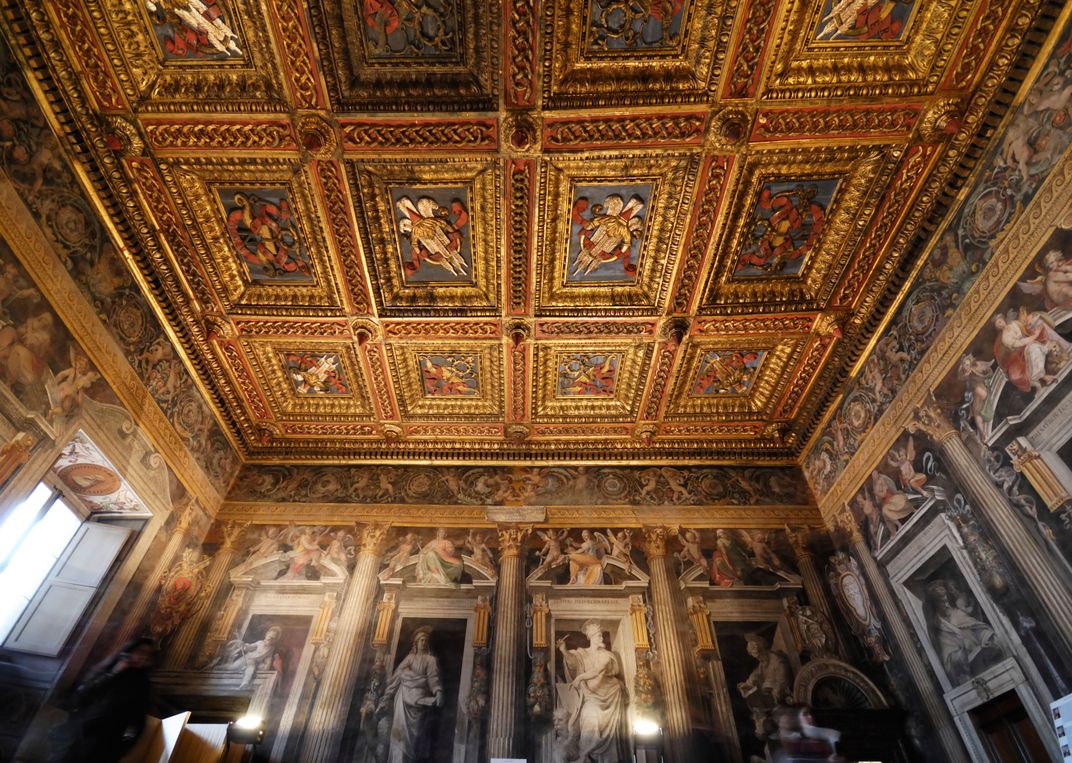
Home to a rich history of classical art, Rome should be a destination on every art lover’s map. Among the artists that fell in love with the city, decorating its walls and chapels with masterpieces, is Raphael—a member of the great trio of High Renaissance art including Leonardo and Michelangelo. To honor the legacy Raphael built in Rome, the city is commemorating the 500th anniversary of his death throughout the year. The Ministry of Culture has organized a mega-exhibition, simply titled “Raphael,” at the Scuderie del Quirinale (March 5-June 2, 2020) that will feature more than 200 of Raphael’s pieces, including the famous Madonna del Granduca (1506-1507) and La Donna Valata (1512-1515). Jointly organized with the Uffizi, which provided over 40 works, the exhibition will include masterpieces never before seen together, on loan from Paris’ Louvre, London’s National Gallery and Madrid’s Prado among others. The celebrations of the artist are not limited to Italy, however; the National Gallery in London is running an exhibition from October 3, 2020 until January 24, 2021 that explores Raphael’s career through his masterpieces.
To fully experience Raphael’s artistic mastery, visit the four rooms in the Vatican Museums, filled with graceful portraits and ornate frescoes, that he and others in his workshop painted between 1508 and 1524. With religious themes and brilliant details, these rooms are the epitome of Italian high renaissance. Another destination that should not be missed is the ancient Pantheon in Rome—inspired by its beautiful architecture, Raphael requested it to be the place of his eternal rest. This spectacular temple has stood for over 2,000 years, and it is one of the best-preserved monuments of Ancient Rome.
Paraty and Ilha Grande, Brazil
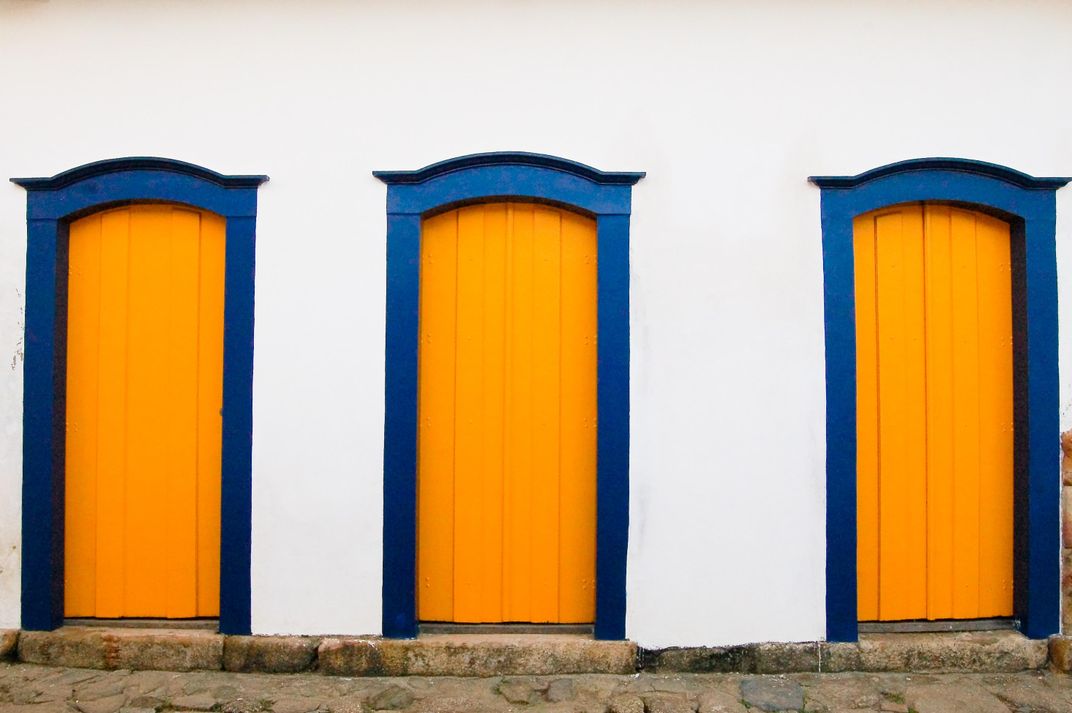
One of UNESCO’s newest World Heritage sites lies on the Brazilian coast between Rio and São Paulo. Paraty, population 43,000, was a port town once critical to the gold and slave trades, and it retains much of its 18th-century colonial architecture and cobblestone streets, making it “one of the best preserved colonial coastal towns in Brazil,” according to UNESCO. Trek up the Morro da Vila Velha hill to see archaeological sites, the first European settlement from the mid-16th century, as well as a fort built two centuries later.
The UNESCO-designated site also includes four nearby protected areas, famed for their biodiversity, that are home to jaguars, a myriad of rainforest frogs and mustachioed, pig-like mammals known as white-lipped peccaries. Travelers can relax on the undeveloped Lopes Mendes beach (for the outdoorsy, you can even hike from a nearby village to this sandy destination) on the island of Ilha Grande or kayak through mangroves near Paraty. Serra da Bocaina National Park, meanwhile, attests to the region’s history with a portion of the paved gold route, or Caminho do Ouro, and the ruins of a building devoted to weighing and taxing that gold.
About 12 miles from Paraty is the Quilombo Campinho da Independência. Quilombos are settlements, often in remote areas, founded by people who escaped slavery. This particular quilombo has a restaurant serving African-influenced Brazilian food as well as a handicraft shop. In the restaurant’s lounge, groups can listen as old and young quilombonas share their experiences (the conversations are translated into English or Spanish) in a “storytelling wheel.”
Nashville, Tennessee
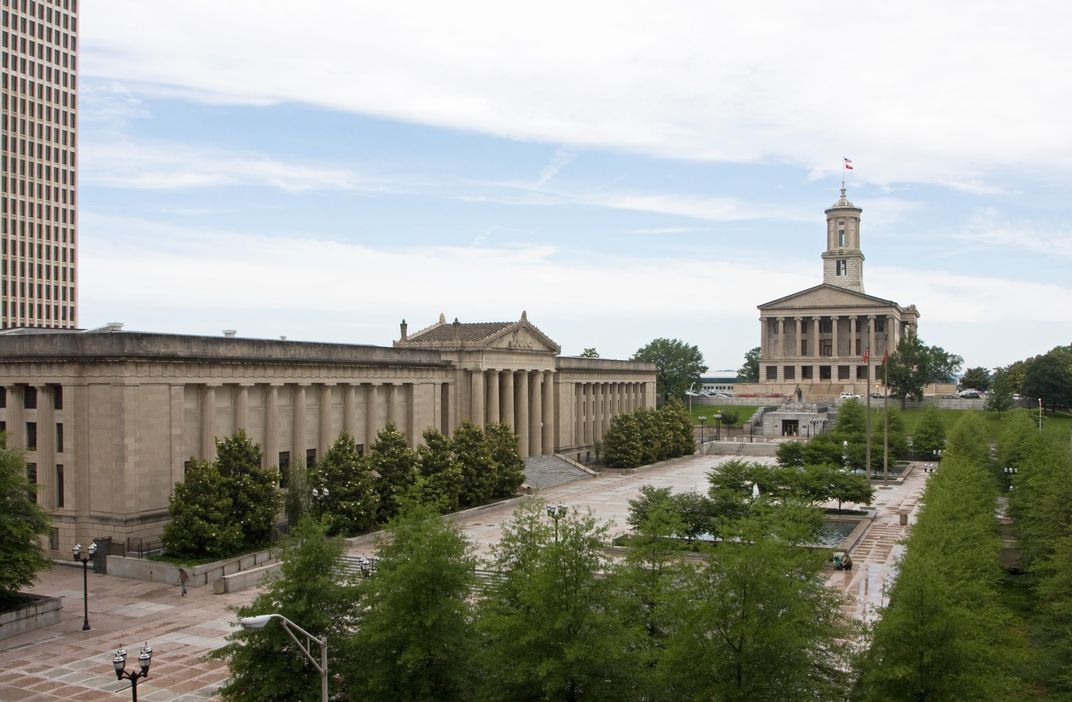
Nashville earned the moniker “Music City” for a reason, but the Tennessee capital made our list not for its fantastic music scene but because Nashville is where the decisive and dramatic vote to add the 19th Amendment—women’s suffrage—to the Constitution took place. Three quarters of the states needed to sign onto the 19th Amendment for it to be ratified, and in August 1920, Tennessee became the crucial 36th state. A young state legislator, Harry T. Burn, switched political sides following a persuasive letter from his mother and cast a tie-breaking vote in favor of suffrage.
A spate of performances and special exhibitions will mark the centennial. On March 27, the Tennessee State Museum will open an 8,000-square-foot exhibition tracing the state’s suffrage movement from its early, post-Civil-War days to the final vote, while the main Nashville Library is hosting its own “Votes for Women” exhibit, showcasing political cartoons and plenty of kid-friendly interactives. One block away, the opulent Hermitage Hotel, once the epicenter of pro- and anti-suffrage lobbying, displays objects from the political fracas, including a telegram congratulating famous suffragist Carrie Chapman Catt, who stayed at the hotel, on the victory.
Music lovers can also add suffrage-themed performances to the itinerary (along with Nashville classics like the Grand Ole Opry or Bluebird Café). In September, the Nashville Symphony will stage the world premiere of Pulitzer Prize-winning composer Julia Wolfe’s new suffrage-inspired work, played and sung by an all women’s chorus and full orchestra. On August 2, the Nashville Opera will put on a one-night-only event where talented local vocalists sing songs, like “Since My Margarette Became a Suffragette” and “She’s Good Enough To Be Your Baby’s Mother and She’s Good Enough To Vote With You,” used to fight for (and against) women’s right to vote. Nashville Ballet, later this year, will premiere 72 Steps, a newly choreographed work named for the number of steps to the Nashville capitol building that recounts the struggle for suffrage in Tennessee. For visual arts aficionados, the Frist Art Museum will display locally-made artwork inspired by Nashville residents’ personal stories about their first times voting.
El Morro National Monument, New Mexico
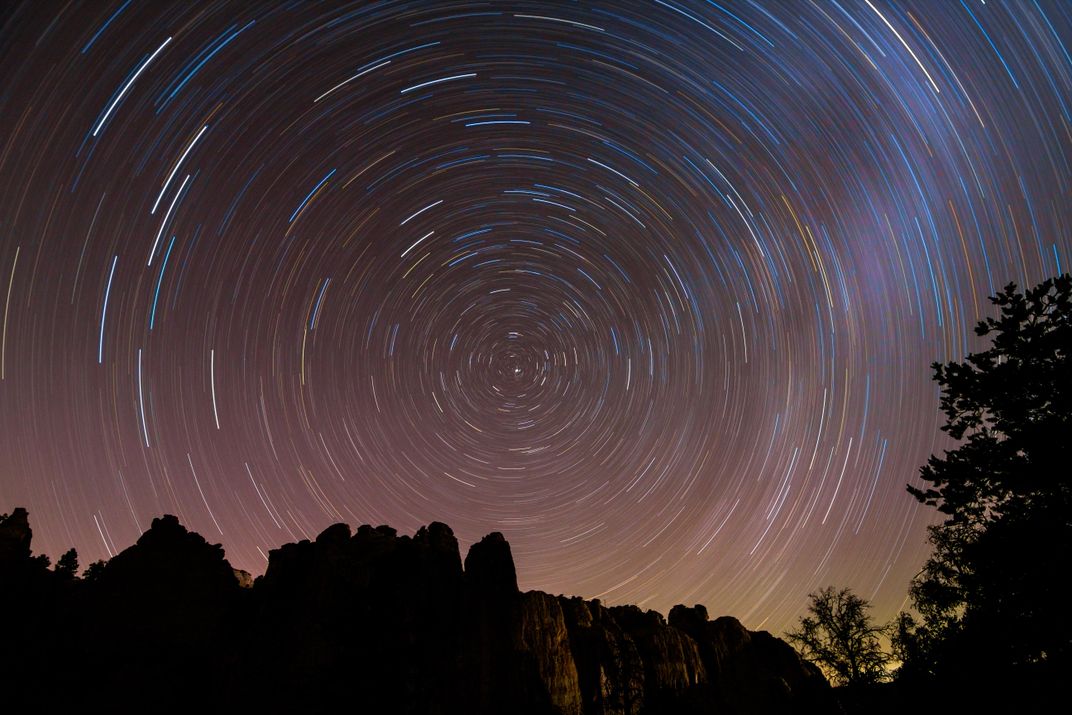
Interested in seeing the Milky Way? Away from city lights, El Morro National Monument, about a two hour drive west of Albuquerque, offers a spectacular view of stars, galaxies and planets. In fact, the International Dark Sky Association recently named El Morro an International Dark Sky Park—a recognition that allows the park to host more astronomy-based educational programming and improve its energy efficiency through outdoor lighting upgrades.
Made even more awe-inspiring by a starry backdrop, the monument is an impressive record of more than 2,000 inscriptions dating back 1,000 years—petroglyphs carved by Ancestral Puebloans and signatures of Spanish settlers and later pioneers—on a 200-foot tall sandstone cliff. If the next couple events on the park’s calendar are any indication of what’s in store, there will be presentations on the hidden colors of the night sky, tours of the constellations and opportunities for visitors to observe these phenomenon for themselves through a telescope. The summer months, with warmer weather and greater visibility, will allow for even more activities, including a celebration of the Dark Sky Park certification.
South Africa
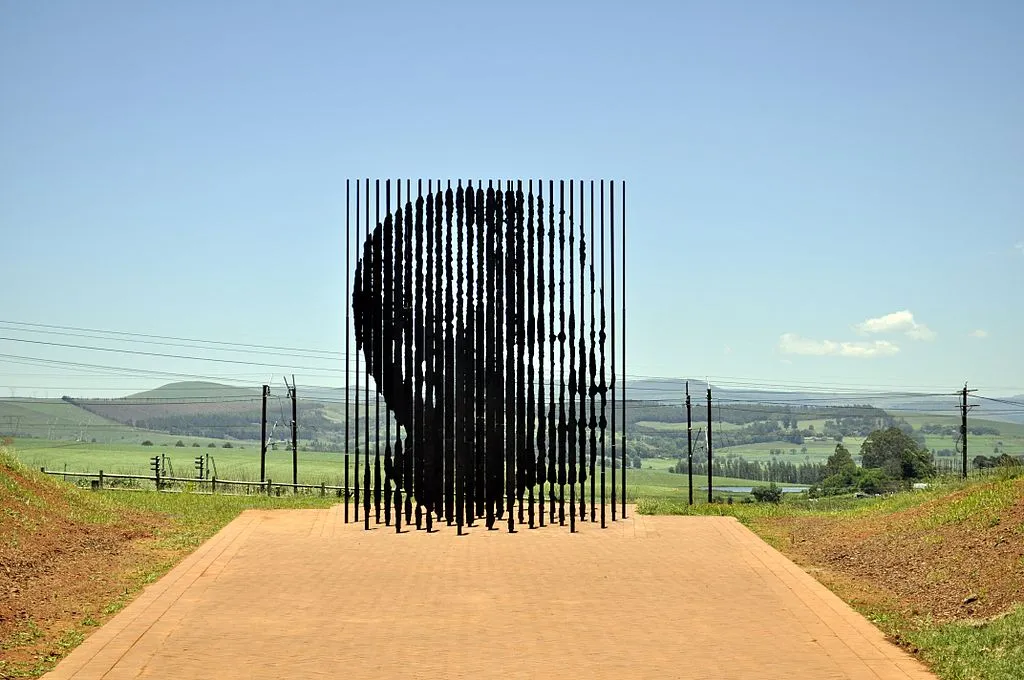
Africa’s southernmost country will commemorate two anniversaries tied to the apartheid era and the political struggle that ultimately ended apartheid and made South Africa a democracy. Thirty years ago, in 1990, anti-apartheid activist and African National Congress leader Nelson Mandela—at the time, arguably the world’s most famous political prisoner—became a free man after serving 27 years of a lifetime prison sentence for “sabotage” against the government. Mandela’s release in combination with a number of other events ultimately steered South Africa to its first democratic elections—open to South Africans of all ethnicities—in 1994, through which Mandela became president.
Spots that honor Mandela’s life and legacy crisscross South Africa. Robben Island, where Mandela spent the bulk of his time in prison holed up in a 7-by-9-foot cell, offers four tours daily, and visitors have the opportunity to learn from guides with unique credentials—they were former Robben Island political prisoners themselves. In April, long-distance swimmers compete in the 4.6-mile “Freedom Swim” from Robben Island to the shores of Cape Town. A two-hour plane flight away in Johannesburg, the Apartheid Museum traces how the state came to sponsor the system of segregation starting in 1948 and then, nearly 50 years later, dismantle it. (It also boasts an exhibition about the life of the man many South Africans call Tata—“father” in Xhosa—Mandela.) The roadside site near coastal Durban where police captured Mandela in 1962 is now marked with a remarkable steel-bar sculpture depicting the leader’s face in profile; upgrades to make the destination more tourist-friendly will be completed by August 2020.
2020 also marks 60 years since the Sharpeville massacre, when police opened fire on thousands of people peacefully protesting pass laws, which required black South Africans to carry identifying documents and limited where they could work or live. Police killed 69 and injured more than 180 people at the protest, sparking national and international outcry; Nelson Mandela and other African National Congress. leaders burned their own passes. March 21, the day of the tragedy, is now Human Rights Day in South Africa. Constitution Hill, a prison-complex-turned-museum in Johannesburg, will mark the occasion with a four-day Human Rights Festival with panel discussions, social-justice-related visual art and photography exhibits, performances, a human rights book fair and a groundbreaking for the Museum and Archive of the Constitution at the Hill, which the Huffington Post reports will document “the making of the South African Constitution—from its African origins in the fight against colonialism, segregation and apartheid until the present.” Visitors to the Constitution Hill museums can, as always, visit the cell Mandela stayed at while imprisoned at Old Fort and learn about the people who were held in inhumane conditions at the Women’s Jail and Number Four (where Mahatma Gandhi was once held behind bars).
Chicago, Illinois
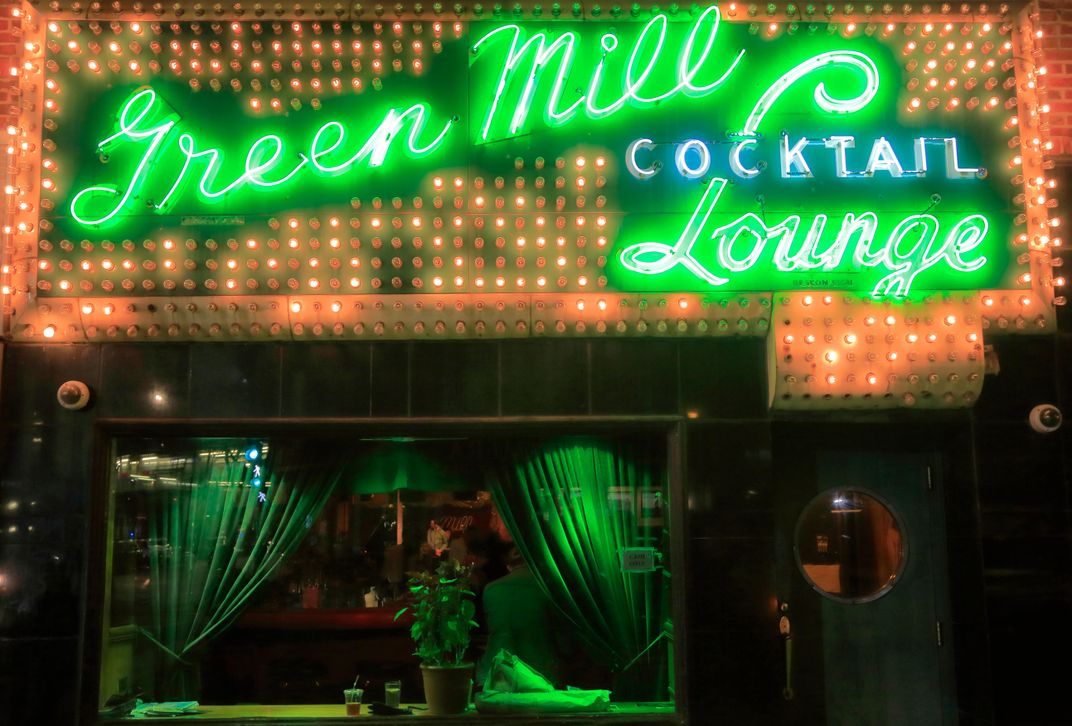
On January 17, 1920, the Prohibition Act officially took effect, stipulating that “no person shall manufacture, sell, barter, transport, import, export, deliver, furnish or possess any intoxicating liquor except as authorized by this act.” With it came the nation’s “worst-kept secret”—the speakeasy. Now, 100 years later, the public is still fascinated by these illicit establishments where men and women gathered to drink bootlegged alcohol and listen to jazz.
By 1924, Chicago had a network of some 20,000 speakeasies. Given this high concentration, the city has become a popular destination for delving into Prohibition history. The Original Chicago Prohibition Tour takes people to the era’s most popular watering holes, while another option, the Chicago Prohibition Gangster Tour, caters to those more interested in the rise in gang activity and mob crimes during Prohibition—making stops at the site of the infamous St. Valentine’s Day Massacre and the location where notorious gangster and bank robber John Dillinger was killed.
Illinois is also celebrating the 100th birthday of one of its most famous authors this year, Ray Bradbury. The sci-fi author recently made news when the New York Public Library released a list of the most checked out books of all time—his dystopian novel Fahrenheit 451 ranked number seven. Born in Waukegan, Illinois, on August 22, 1920, Bradbury wrote upwards of 30 books and nearly 600 short stories in his lifetime. When he died in 2012, the New York Times declared him “the writer most responsible for bringing modern science fiction into the literary mainstream.” Set to open in August 2020 in Waukegan, the Ray Bradbury Experience Museum will educate the public on the sci-fi author’s life and honor his work with immersive and interactive experiences that interpret his creative works.
Palau
/https://tf-cmsv2-smithsonianmag-media.s3.amazonaws.com/filer/08/dc/08dccebd-a5eb-4fd6-b158-faf65e7a0939/meyungs_koror_palau_-_panoramio_4.jpg)
Travelers arriving in Palau, a freckling of islands in the western reaches of the Pacific Ocean, sign a pledge: “I vow to tread lightly, act kindly and explore mindfully,” reads the passport stamp. “The only footprints I shall leave are those that will wash away.” The statement, adopted in 2017, reflects the dive destination’s environment-first attitude.
In 2020, after five years of work, Palau’s new National Marine Sanctuary went into effect, protecting 183,000 square miles or nearly 80 percent of the tiny country’s waters from commercial fishing. The marine sanctuary is intended to protect Palau’s 1,300-plus species of fish and 700 types of coral but will not dictate where tourists can visit, a representative from the Stanford Ocean Center, which helped create a report for the Palau government on the planned sanctuary, assured Smithsonian. The country also became the first in the world to ban types of sunscreen (about half of the commercially available options, according to the BBC) that contain ingredients known to bleach coral.
Palau’s reputation as an “underwater Serengeti” is warranted; adventurers can snorkel alongside gentle, non-stinging golden jellyfish in the aptly-named Jellyfish Lake, marvel at the giant clam inhabitants of Clam City, or (for experienced divers) spot reef sharks at the Blue Corner. The Rock Islands—uninhabited, vegetation-shrouded outcroppings that are a haven for nearly 400 coral species—are also well worth a visit. The 445 mushroom-shaped islands were proclaimed a UNESCO World Heritage Site in 2012.
While the majority of tourists partake in the nation’s aquatic attractions, the islands have offerings for landlubbers too. On Babeldaob, the largest island, travelers can hike through the jungle to the thundering Ngardmau Waterfall—the highest in Micronesia. World War II buffs might want to tour Peleliu, an island where rusty plane wrecks and weapons attest to a fierce 1944 battle between the U.S. and Japan over its airstrip.
Massachusetts
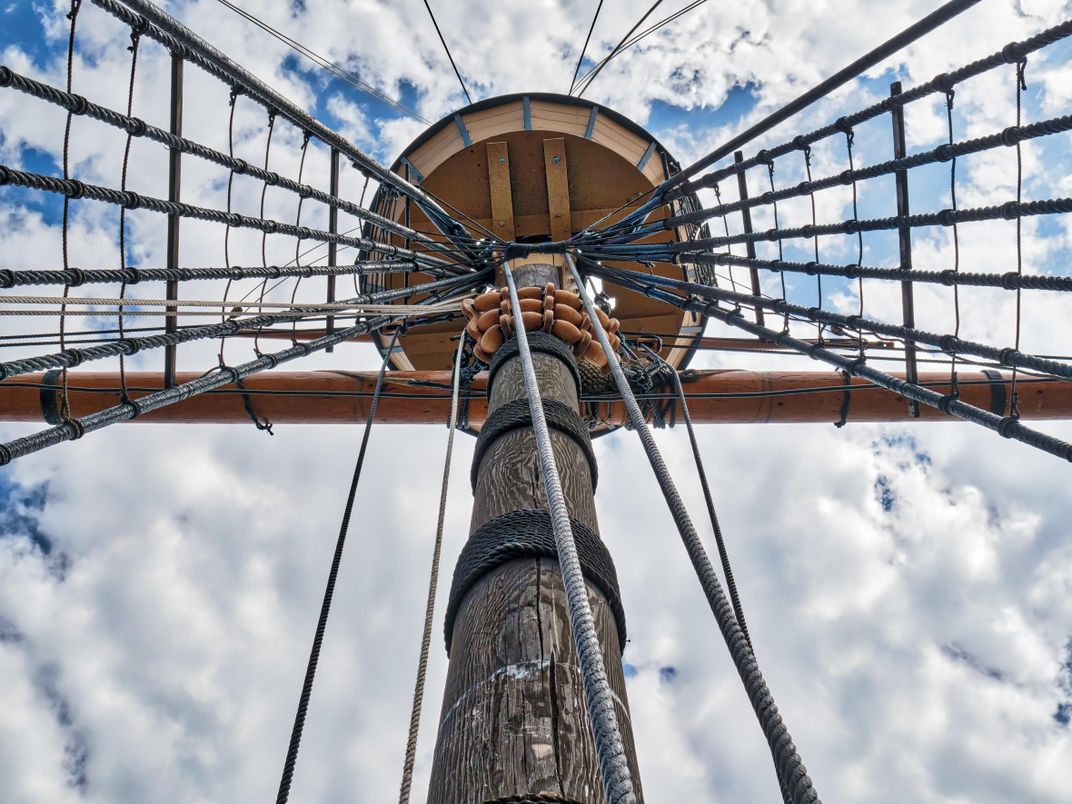
In 1620, the Mayflower embarked on a voyage from Plymouth, England to the New World. Upon arrival on the shores of what is now Provincetown, Massachusetts, the pilgrims signed the Mayflower Compact—a governing document believed by many to have been an early influence for the Declaration of Independence and the U.S. Constitution. After spending five weeks exploring the area, the colonists sailed across Cape Cod Bay to Plymouth, where they established the Plymouth Colony.
To mark the 400th anniversary of these events, celebrations will be held on both sides of the Atlantic. Plymouth, England, is organizing a multitude of events, from a Mayflower Ceremony on September 16 (the date of the ship’s departure four centuries ago) to a “Mayflower 400: Legend and Legacy” exhibition at The Box, a new museum opening this spring. Meanwhile, in Massachusetts, the Pilgrim Monument and Provincetown Museum (PMPM) has organized a series of commemoration activities, kicking off with an opening ceremony on April 24 in Plymouth and featuring a historical reenactment of the signing of the Mayflower Compact on September 13 on Provincetown’s MacMillan Pier. Provincetown 400, as the series is called, aims to retell the history of Plymouth Colony from both perspectives, the Mayflower Pilgrims and the Wampanoag nation.
As a part of the 400th anniversary celebration, Mayflower II, a full-scale reproduction of the sailing vessel that carried the English colonists in 1620, will sail from Plymouth, where it sits as an exhibit in the Plimoth Plantation, to Provincetown, Massachusetts, on September 10, 2020. “We expect thousands to come to Provincetown to visit Mayflower II and to learn about the beginning of the Pilgrims’ story,” said Dr. K. David Weidner, executive director of the PMPM.
Bonn, Germany
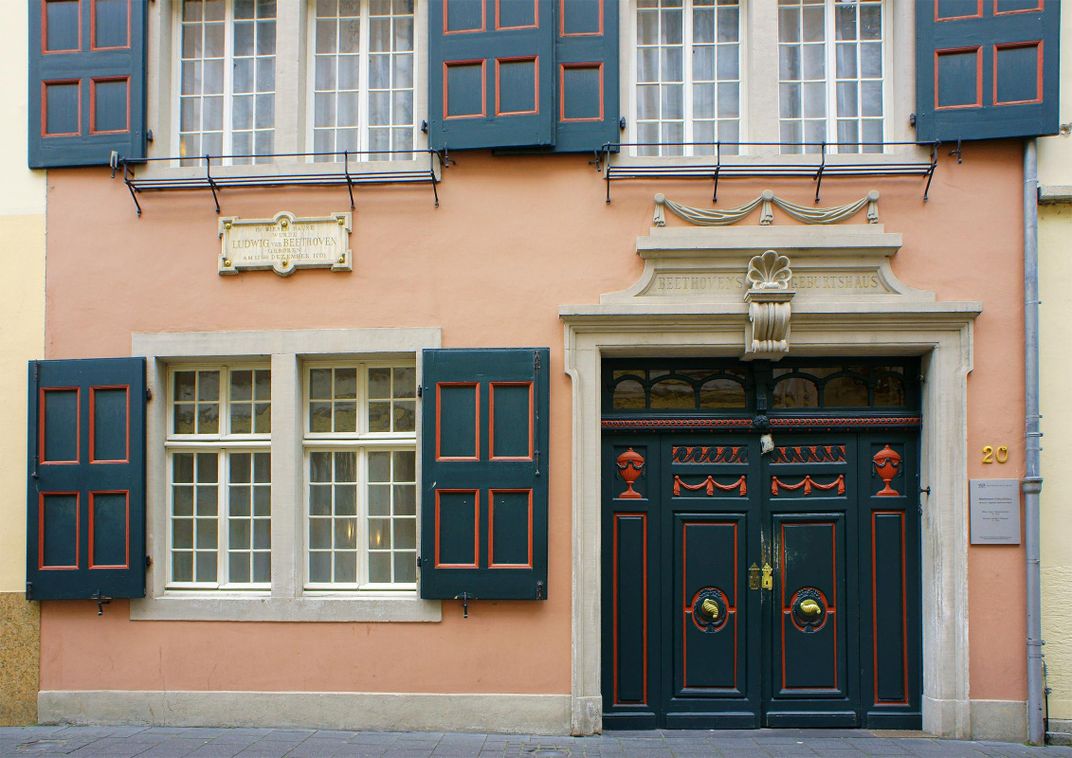
Widely known as the City of Beethoven, Bonn is pulling out all the stops for the 250th anniversary of the classical composer’s birth. Born in 1770 (his real birthday, still a matter of speculation, is believed to be a day before his recorded baptism on December 17), Ludwig van Beethoven lived in this German city until he moved to Vienna at age 22. The house where Beethoven was born and raised for the first few years of his life—known today as Beethoven Haus—is still standing and a popular attraction in the city. Built in the 18th century, the home recently underwent a 10-month long renovation and reopened in December, with its permanent exhibit including instruments, scores and notebooks used by the composer.
The Beethoven Anniversary Society have planned BTHVN2020, a year-long calendar of concerts and tributes across Germany dedicated to the life and achievements of the composer. An estimated 1,000 performances and events are taking place between now and December 17, 2020 in Germany, with the majority of them happening in Bonn. The two-day “Beethoven Bürgfest,” beginning August 14, 2020, will trace Beethoven’s life in Bonn, feature musical performances and remember the 1845 unveiling of the bronze Beethoven monument in Bonn’s city center. The year of celebration will close with a concert held in Bonn’s parliament building, as a tribute to the political significance of the composer’s work—the European Union anthem is based on “Ode to Joy” from Beethoven’s Ninth Symphony.
New York, New York
/https://tf-cmsv2-smithsonianmag-media.s3.amazonaws.com/filer/7f/19/7f19b087-8cff-423f-9e83-aace9998c02f/01_the_metropolitan_museum_of_art_new_york_exterior_photo_courtesy_of_the_met.jpg)
New York City’s most visited museum—the Metropolitan Museum of Art—is celebrating the 150th anniversary of its incorporation and very first acquisition, a Roman sarcophagus. Both events occurred four short years after lawyer John Jay first floated the idea to a circle of American friends while in Paris and wooed philanthropists and art collectors to support his fledgling museum. While the sesquicentennial doesn’t mean the Met Gala is opening to the public, the museum is hosting a “community festival” with tours and to-be-announced performances and art-making activities the weekend of June 4-6. The "Making The Met, 1870-2020" exhibition (March 30-August 2) will highlight gems of the Met’s vast (it spans 5,000-plus years of art) collection, including rarely-displayed, fragile works like Michelangelo’s studies for the Sistine Chapel’s Libyan Sibyl, a female figure painted on the ceiling fresco. In March, the museum will open 11,000 square feet of gallery space showcasing British decorative arts (think carefully crafted teapots) from the 16th to 20th centuries. And as usual, the Met’s rotation of exhibits will showcase art from around the globe, including early Buddhist art made in India, Cubist paintings and Tudor-era masterworks.
The Met sits in Central Park, which is where the first New York City Marathon was held 50 years ago, with 127 participants who’d paid the $1 entry fee. Less than half of them finished. Last year, 53,627 runners took part in the 26.2-mile run, now spanning all five of the Big Apple’s boroughs. Even non-runners can enjoy the race’s 50th anniversary this year (November 1) by joining the crowds that cheer, sometimes rowdily, the endurance athletes on. (Here’s a list of the best cheering spots, courtesy the New York Times; apparently, there’s even a Baptist church whose choir sings for marathoners at full volume.)
/https://tf-cmsv2-smithsonianmag-media.s3.amazonaws.com/filer/ab/51/ab51e206-adea-4341-8fe8-e4c0c7031d6e/brazil-mobile.jpg)
/https://tf-cmsv2-smithsonianmag-media.s3.amazonaws.com/filer/f8/94/f89435a6-f73d-4cbe-9443-b0a9f756b69a/brazil-opener.jpg)


/https://tf-cmsv2-smithsonianmag-media.s3.amazonaws.com/accounts/headshot/Image_from_iOS.jpg)